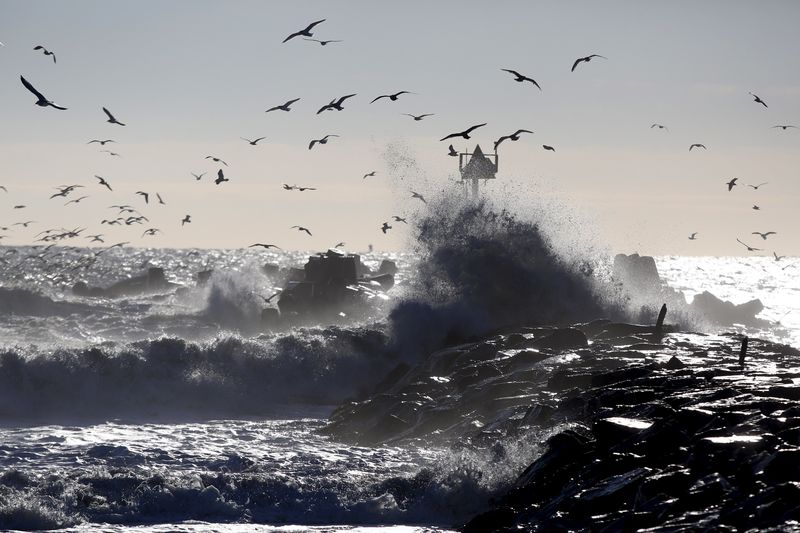(Repeats story published on Tuesday evening with no changes to text)
By Tom Westbrook
SYDNEY, July 31 (Reuters) - When Australia bankrolled undersea internet cables for its Pacific neighbours, it shut out a competing offer from Chinese telecom giant Huawei Technologies Co Ltd HWT.UL .
But the strategic move to spend A$91 million ($67 million) connecting Sydney with Papua New Guinea and the Solomon Islands via cables in the Coral Sea has perplexed many Australians, who must deal with home internet speeds that are among the slowest in the developed world.
On Norfolk Island, a verdant Australian speck in the South Pacific, where a connection to a cable 90 kilometres (56 miles) away would cost just A$15 million, Canberra's decision to skip the project is galling.
"The amount of money that we're talking about for the Solomons and PNG cables is about ten-fold what it would have cost to connect Norfolk," Brett Sanderson, president of Norfolk Island People for Democracy, an activist group, told Reuters.
The undersea cables are part of a vigorous new campaign by the United States and its allies to reassert their influence in the Pacific amid fears that the region is increasingly susceptible to diplomatic pressure from Beijing. along with the U.S. and Britain, has also raised concerns that Huawei exposes telecom networks to security risks, a claim the company denies. for the Coral Sea links comes from Australia's A$1.3 billion Pacific aid budget, separate from what is set aside for domestic infrastructure projects like broadband internet. with the promise of connections quicker than those in Australian cities, and as discontent with domestic telecoms near an all-time high, the project risks becoming a political liability.
"If it's good enough for these other countries, why is it not good enough for territories that Australia claims as its own?" Sanderson said.
TROUBLED BROADBAND
The National Broadband Network (NBN), meant to deliver fast, affordable internet, is behind schedule, over budget and underwhelming, drawing thousands of complaints from across Australia. country's average internet speed of 11.1 megabits per second ranks it 50th in the world. By contrast, the undersea cables can transmit 20 terabits per second, about 1.8 million times faster, although no single user will hit that mark.
"It's a huge disappointment," said Alison Baker, who runs a guesthouse in the popular tourist hamlet of Kangaroo Valley, 115 kilometres south of Sydney. She said she cannot offer internet service for her guests because even her own slow connection costs more than A$250 per month.
A spokesman for the government-owned NBN Co said it was not economical to expand the fibre network, designed to connect 8 million homes.
"The cost per premise per connection would be even higher and this would put pressure on our A$49 billion peak funding," said Tony Brown, executive manager for corporate media at NBN.
Australia can both pay for the NBN and "help our neighbours," a foreign affairs spokesman said by email. But the government has said there was no business case for a cable link to Norfolk Island, which has a population of 1,700.
CHINA CALLING
Australia's promise to help pay for the Coral Sea cables, which will be laid by Nokia Oyj's NOKIA.HE Alcatel Submarine Networks and operated by Vocus Group Ltd VOC.AX , came after the Solomons agreed to a deal with Huawei in mid-2017.
Within months, Australia had established a subsea cabling division in its foreign office and said it would not allow the Solomons cable to connect in Australia. That upended the project, said Keir Preedy, chief executive of its developer, the government-owned Solomon Island Submarine Cable Company Ltd.
In April, Australia promised to lay a subsea link to Papua New Guinea, and two weeks later it said would extend the cable to the Solomon Islands, paying for two thirds of the project and forcing out Huawei. hoped Australia would make us an offer to compensate, but frankly I was surprised at how good it was," Preedy said. "It was obviously designed at the outset to be the kind of deal that you really say: 'Where do we sign up?'"
Australia has not explained the nature of its issues with the proposed Huawei cable.
A spokesman for Australia's Department of Foreign Affairs and Trade said the Solomon Islands company never applied for a permit to connect the Huawei cable to an Australian hub. Preedy said the company was told not to file an application.
Representatives from the Solomon Islands and Papua New Guinea governments were not immediately available for comment.
Huawei, which denies its equipment is a security threat, was never informed of any problems, said Brent Hooley, Huawei's Australia government and stakeholder relations manager.
CABLE COMPETITORS
Australia characterises the new project as part of an "enduring commitment" to the region. message has not gone unnoticed by other neighbours. Several other South Pacific countries have expressed interest in funds for their own cable projects, according to an Australian diplomatic source who is not authorised to speak publicly.
Simon Fletcher, managing director of Vanuatu-based Interchange Limited, which is laying a government-backed cable from Port Vila, its capital, to Honiara in the Solomon Islands, said Australia's subsidy threw the market into turmoil.
"We've been scrambling," he said, adding that his company had asked the Australian government for help.
Australia is "willing to explore options for support," said a spokesman for the Department of Foreign Affairs and Trade.
In the meantime, the Coral Sea project can't come soon enough in the Solomon Islands, where clouds can disrupt pricey satellite connections.
"It's been too long; we are desperate for it right now," said Edmund Losi, information and communications technology manager at the University of the South Pacific's Honiara campus.
"The relationship with Australia is important for the government and politicians, but we don't care really," he said. "If it can be done sooner with China, then come on, China." ($1 = 1.3486 Australian dollars)
<^^^^^^^^^^^^^^^^^^^^^^^^^^^^^^^^^^^^^^^^^^^^^^^^^^^^^^^^^^^ Submarine cables in the Pacific
https://tmsnrt.rs/2Lvkb5B
^^^^^^^^^^^^^^^^^^^^^^^^^^^^^^^^^^^^^^^^^^^^^^^^^^^^^^^^^^^>
